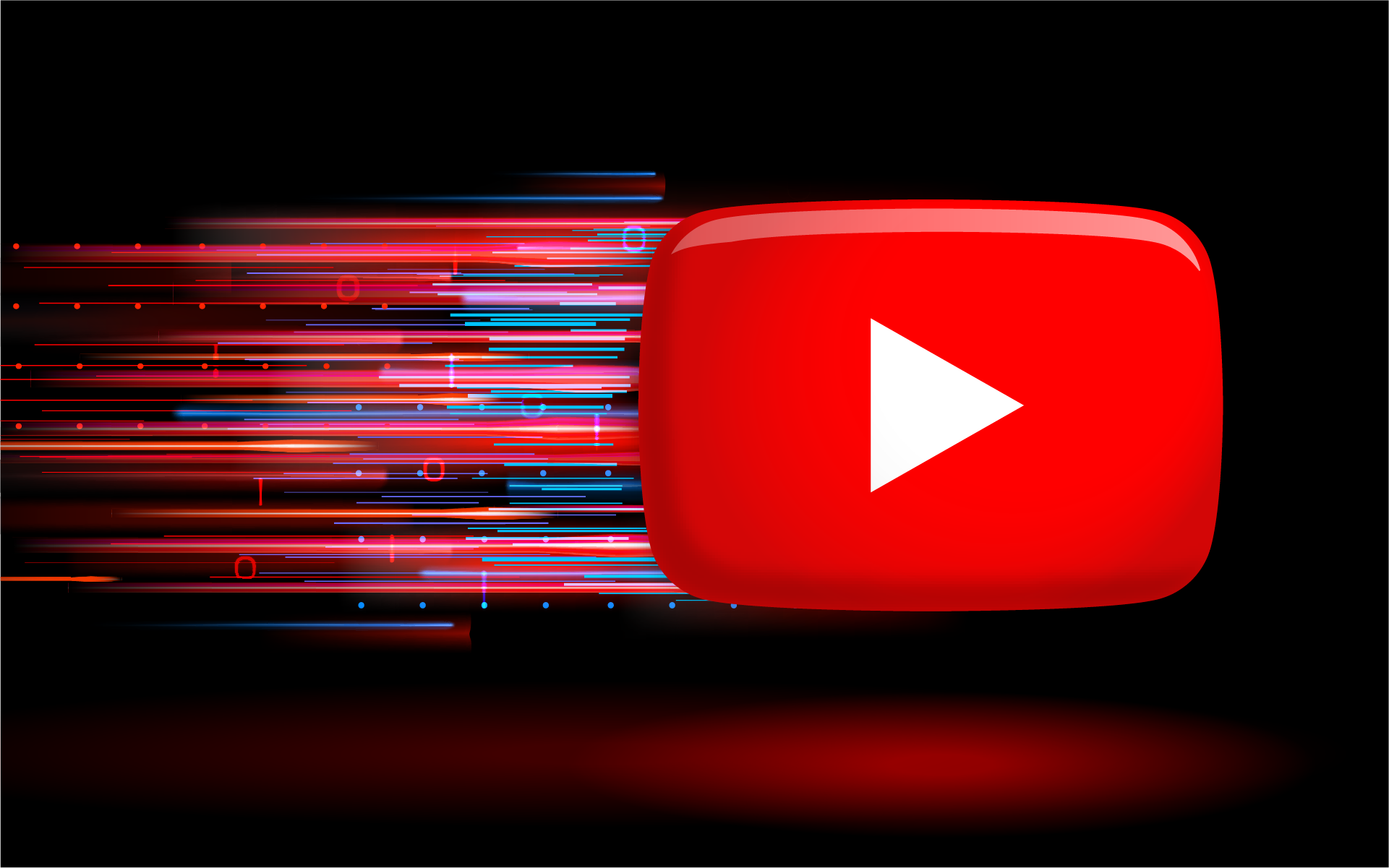Streaming on Satellite Internet
How to watch cat videos without breaking the bank
Dec 3, 2025 | Share
Streaming Guides
Most people get their news and entertainment through streaming. For years, more people have watched video over the internet than over broadcast television. Good quality streaming is a basic expectation most people have for their internet service, but it’s one that remains elusive to satellite internet customers.
Traditional satellite internet services are not well designed for streaming video, but with a few data-saving tricks, you can make it work. Read on to see if any of these tips and tricks work for you.
Best satellite internet for streaming: Starlink Residential
Data as of 12/03/2025. Offers and availability may vary by location and are subject to change.
*Plus hardware, shipping & handling fees, and tax. Fully refundable. Depending on location, some orders may take 6 months or more to fulfill.
Starlink Residential is the best way to stream video over satellite. Starlink download speed estimates have gone up and down over the years, even dropping below the suggested minimum for 4K at times, but their standard Residential plan currently advertises a maximum speed of 400Mbps, which is more than enough for a single device streaming video.
Importantly, the Starlink Residential plan has unlimited data. Streaming video is one of the most data-intensive activities people engage in, so even plans with high data caps can run through your monthly allowance with just a single streaming device. Starlink Residential’s unlimited data gives you the peace of mind to watch as much as you want without worrying about your data running out.
If $120 per month seems a bit much, Starlink provides a “Lite” version for $40 less per month, but you’ll see slower speeds during peak times.
For more information, check out our in-depth Starlink review.
 Pros:
Pros:
- Fastest satellite download speeds
- No data caps
 Cons:
Cons:
- High upfront cost
- Long waits for equipment
Popular satellite providers
| Provider | Starting price | Speed range | Order online |
|---|---|---|---|
| $119.99/mo.* | Up to 12–150Mbps | ||
| $39.99/mo.† for first 12 mos. | Up to 25–100Mbps (stated speeds are not guaranteed) | ||
|
| $80/mo.‡ | Up to 300–400Mbps |
Data as of 09/04/2025. Offers and availability may vary by location and are subject to change. Read disclaimers.
Viasat is pretty close to Starlink in both speed and cost, plus both offer unlimited data. If you use video chat or play online games, Viasat can cause issues with its much higher latency, but if you only care about video, Viasat is an excellent alternative.
Hughesnet has slightly lower top speeds than the other satellite providers, but it’s enough to stream movies and TV—at least in theory. When we tested Hughesnet plans first-hand, we found that it couldn’t maintain enough speed to stream most content. The most we could manage were YouTube videos at 480p resolution, which is less than most people expect from their phones.
How much speed do I need to stream video?
Video can use a lot of bandwidth, but it depends heavily on the quality of the picture and the number of devices that are streaming at the same time. Different video services have different bandwidth recommendations, though they’re usually pretty similar. Watching high definition 4K video on a single device, for example, usually requires about 25 Mbps of download speed, which is technically doable over satellite.
For a more detailed breakdown of speed requirements for different platforms, check out our guide to How Much Speed Do I Need to Stream Video.
One nice thing about video streaming services like Netflix and Hulu is that the software itself is really good at buffering your signal. When you’re watching a movie, your device downloads the data a few seconds ahead of what’s actually playing on the screen. That means if the speed of your connection fluctuates or there’s a brief disruption, your movie keeps playing smoothly off that pre-downloaded data without any pauses.
Naturally, live content can’t do this as well without putting a huge delay between the live content and when it appears on your screen, so you’re more likely to encounter buffering issues watching a Twitch stream or a live newscast than with pre-recorded content.
Streaming and data caps
Streaming video over satellite isn’t an ideal situation. While most satellite plans meet the speed requirements for streaming video, data caps usually pose the bigger problem. Satellite data caps are incredibly low compared to other types of internet. Although a plan with 50 GB of data might seem like a lot, you could easily run through four or five GB of data for one movie night.
If watching a show in the evening is part of your daily routine, a 50 GB data plan might only get you halfway through the month. Throw in a couple of kids that want to watch Bluey on their iPads every day after school and you could find yourself running out of data in a matter of days, which isn’t very practical.
Choose unlimited data
The best choice for anyone who watches a lot of online video is to choose an internet plan that offers unlimited data. Right now, the only satellite service that does this is Starlink Residential , making it the clear choice for rural Netflix fans. Starlink speeds are also high enough that you shouldn’t have any bandwidth problems, even if streaming on multiple devices simultaneously.
Lower your picture quality
Although it’s not the most visually appealing option, lowering your video resolution drastically reduces the amount of data it uses. Even just dropping the quality from 4K UHD to HD can make your data last around five times longer.
If you watch everything in standard definition, you could probably watch video every day and still make it through the whole month on an average data plan. You can change the resolution of videos on a service like Netflix through its settings menu.
This is also the same principle behind how things like Video Data Saver work. By automatically throttling your speed when you watch a video, it forces lower resolution playback that uses less data.
Get satellite TV
Getting a satellite TV plan like DirecTV in addition to your satellite internet may sound like an expensive solution, but in some situations, it could actually save you money. Unlike satellite internet, satellite TV prices depend primarily on the number of channels you get, not how much data you use or how much time you spend using it. For those who watch video all day, every day, paying for a second satellite service could be cheaper than buying all the extra data needed every month to support your TV habit.
Of course, satellite TV works a lot differently from a streaming service, and if the channels you want only come in the most expensive packages, it may not be worth it. For some people, however, satellite TV can be a way to watch as much video as you want without worrying about how much data you’re using.
The bottom line: Streaming on satellite is tricky but doable
If you’ve dealt with slow, grainy video or massive data overage charges in the past, you might have given up on trying to watch online video at all. Fortunately, new developments in satellite technology have been emerging in the last few years and there are several ways for satellite customers to access high-quality video without incurring outrageous data rates.
Want to know what other internet options are available in your area?
Enter your zip code below to see what’s available to you.
Streaming on satellite FAQ
Can you stream video with satellite internet?
Is satellite internet good for Netflix?
Disclaimers
* Viasat
- Prices, speeds and availability vary by location. Prices are subject to change. No annual contract or installation fees are required. Monthly equipment lease fees and taxes may apply.
† Hughesnet
-
Minimum term required and early service termination fees apply. Monthly Fee reflects the applied $5 savings for ACH enrollment. Offer may vary by geographic area.
‡ Starlink
- Plus hardware, shipping & handling fees, and tax. Fully refundable. Depending on location, some orders may take 6 months or more to fulfill.
Author - Peter Christiansen
Peter Christiansen writes about telecom policy, communications infrastructure, satellite internet, and rural connectivity for HighSpeedInternet.com. Peter holds a PhD in communication from the University of Utah and has been working in tech for over 15 years as a computer programmer, game developer, filmmaker, and writer. His writing has been praised by outlets like Wired, Digital Humanities Now, and the New Statesman.
Editor - Rebecca Lee Armstrong
Rebecca Lee Armstrong has more than six years of experience writing about tech and the internet, with a specialty in hands-on testing. She started writing tech product and service reviews while finishing her BFA in creative writing at the University of Evansville and has found her niche writing about home networking, routers, and internet access at HighSpeedInternet.com. Her work has also been featured on Top Ten Reviews, MacSources, Windows Central, Android Central, Best Company, TechnoFAQ, and iMore.



